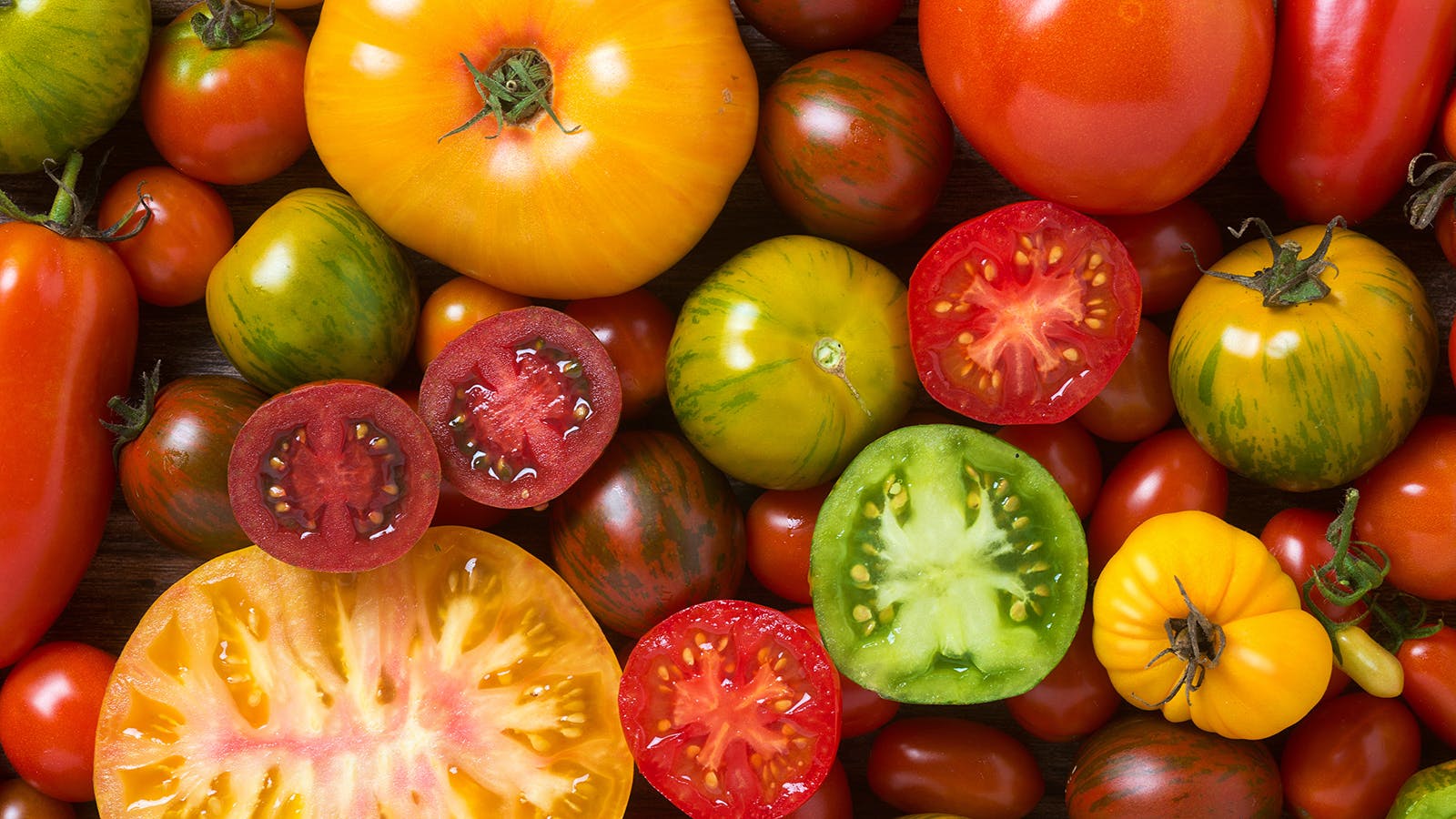



Article by: Hari Yellina
For years, European shoppers have had a variety of tomatoes to choose from. Although’standard’ round red tomatoes are widely available, supermarkets are increasingly stocking special premium lines. They want to set themselves apart by using these tomatoes, which have that added attraction. Breeding businesses like Axia Vegetable Seeds are in charge of developing these types. Varieties that deepen rather than increase the existing spectrum. This Dutch breeding company focuses on the taste sensation with its Flaxorax range. This season, this line contains two new varieties, which were on exhibit in early April at Axia’s stand at Fruit Logistica, which was filled with all kinds of tomatoes. There are now six different kinds in the line.
These two new kinds are aimed at the larger size market; they’re both TOVs, with one weighing around 110g (medium-large) and the other around 130g. Both have a deep crimson interior colour and dark red flesh, just as the other Flaxorax tomatoes. Even from the outside, though, it is clear that they are distinct. William van der Riet, Axia’s Business Initiator, takes up one of the HTL 1907547, 110g tomatoes at the trade expo. It’s slightly flatter and has a dark crimson colour, giving it a gourmet appearance. As a result, this tomato has the appearance and feel of a normal premium line of retail tomatoes. Medium-to-large vine tomatoes are frequently found in the flavour area of supermarkets,” he says.
Axia provides a wide range of options for both illuminated and unlit horticulture. William sees potential in German supermarkets, among other things. “In this segment, people are willing to pay a premium for good-tasting tomatoes.” The larger 130g truss variation, HTL1907548, is likewise unique. It has a flattened, round shape, and when cut open, you can see the rich red meat and green-tinged gel. According to William, the reference varieties in this market area are often rounder. “These are sold packaged in stores. The peculiar fruit form of this variety distinguishes it as a tomato with a little more personality.”
However, it is critical that the culinary-appearing cultivars are simple to grow. “Aside from having a decent shape and flavour, productivity is also important. However, the production of a premium line can be slightly lower in terms of kilos. That’s because, like some specialties, their price makes up for the fact that their production is sometimes a little lower. However, in terms of output, the diversity can’t be too extreme “William goes on. As a result, the business focused last year on stabilising the Flavorax line in terms of cultivation and appearance. Practical experiments with the new types in the line will begin this year. “The market input provided by this is priceless.”
With all of these recent advancements, breeding companies are facing a challenging year. Not only because businesses need to light and heat their greenhouses, but also because consumers’ reactions to growing prices are unknown. “Will they go for ‘normal’ meals or something more culinary?” William wonders. He has no idea, albeit he hopes for a specific outcome. “Perhaps the market will choose tomato varieties that offer better value for money, such as slightly larger types rather than the primarily smaller kinds currently available. Larger ones, on the other hand, that look, feel, and, most importantly, taste like quality tomatoes, “He comes to a conclusion.
Regardless, Axia’s Flavorax range is dedicated to taste and beauty. However, William predicts that bulk varieties will enter the picture if high costs compel the industry to stick to a more traditional cultivation strategy. Axia has a large selection here as well, with variations including Xandor and Macxize, two of the most popular TOVs in the spectrum.